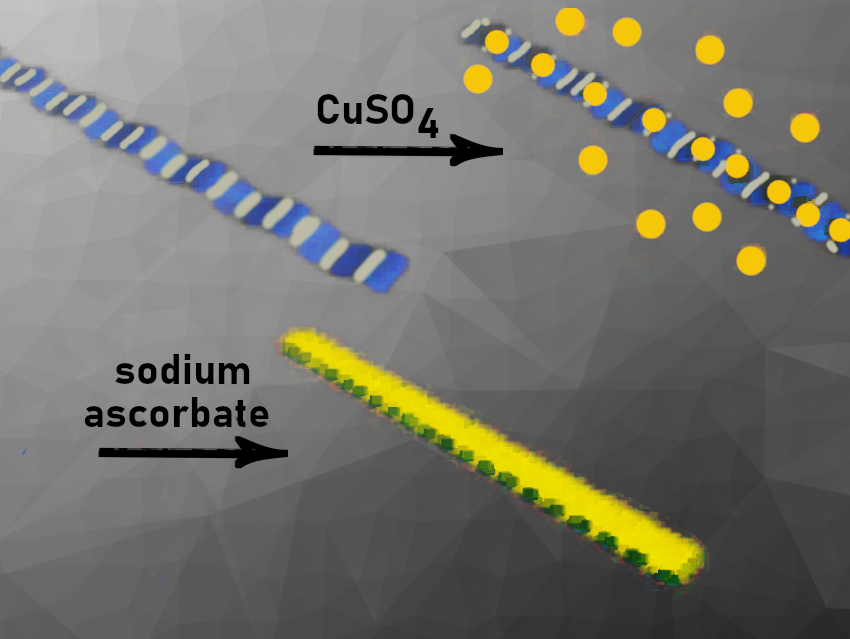Amorphous two-dimensional (2D) materials may outperform their crystalline counterparts in various applications because they have more defects and reactive sites. They offer a unique surface chemical state and provide an advanced electron/ion transport path. However, creating ultrathin and large-sized 2D amorphous metallic nanomaterials in a mild and controllable manner is challenging due to the strong metallic bonds between metal atoms.
Xiaoguo Liu, Shanghai Jiao Tong University, China, and colleagues have developed a simple and fast method to synthesize micron-scale amorphous copper nanosheets using a DNA nanosheet (DNS)-templated technique. The nanosheets were synthesized in aqueous solution at room temperature, and had a thickness of 1.9 ± 0.4 nm. Micron-sized DNA nanosheets (DNSs) DNSs with a template sequence were used as a soft template to program the growth of amorphous CuNSs. By precisely controlling copper nucleation sites with DNA sequence design, reactive precursor Cu2+ ions were absorbed onto the specific sites of the DNS and then reduced to Cu clusters by sodium ascorbate. This was done by incubating the DNS with CuSO4 for 5 minutes at room temperature which created a mixture of DNS and metal ions (DNS/Cu2+), which was incubated with sodium ascorbate for 5 minutes at room temperature to yield the 2D amorphous DNS/CuNSs.
Compared to dsDNA-templated discrete Cu nanoclusters, these amorphous Cu nanosheets show stronger photoemission intensity and photostability. The researchers attribute this to the elevation of both the conduction band (CB) and valence band (VB). Detailed material characterization revealed the amorphous characteristics of the fresh CuNSs, with a disordered structure at the atomic scale and a periodic structure at the nanoscale. The short reaction time and ambient reaction temperature played critical roles in the amorphization of CuNSs by limiting the ordered arrangement of the copper atoms. The researchers found that the nanosheets could transform to crystalline forms under continuous electron beam irradiation.
According to the researchers, such ultrathin amorphous DNS/CuNSs hold great potential for practical applications in biosensing, nanodevices, and photodevices. The team envisions that their approach can be extended to the synthesis of other metal nanosheets with thicknesses of a few atomic layers, providing a promising way to develop high-performance functional 2D nanomaterials.
- Micron-Scale Fabrication of Ultrathin Amorphous Copper Nanosheets Templated by DNA Scaffolds,
Xiangyuan Ouyang, Yongli Wu, Yanjing Gao, Lingyun Li, Le Li, Ting Liu, Xinxin Jing, Yue Fu, Jing Luo, Gang Xie, Sisi Jia, Mingqiang Li, Qian Li, Chunhai Fan, Xiaoguo Liu,
J. Am. Chem. Soc. 2023.
https://doi.org/10.1021/jacs.2c12009




